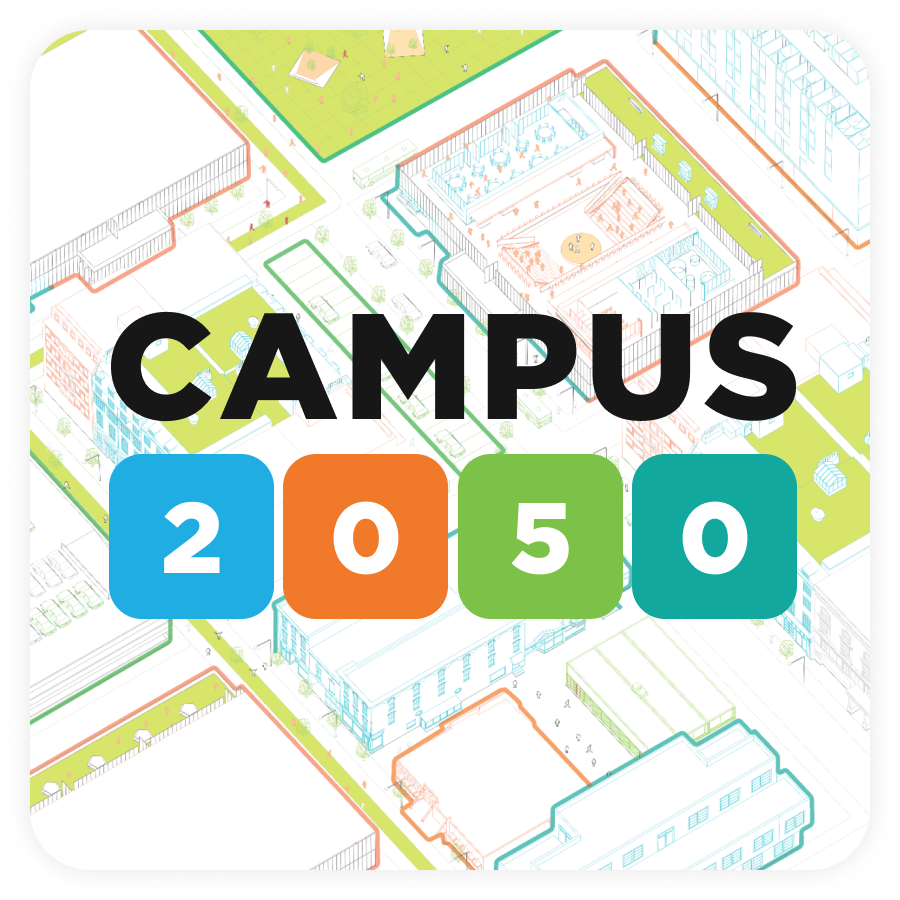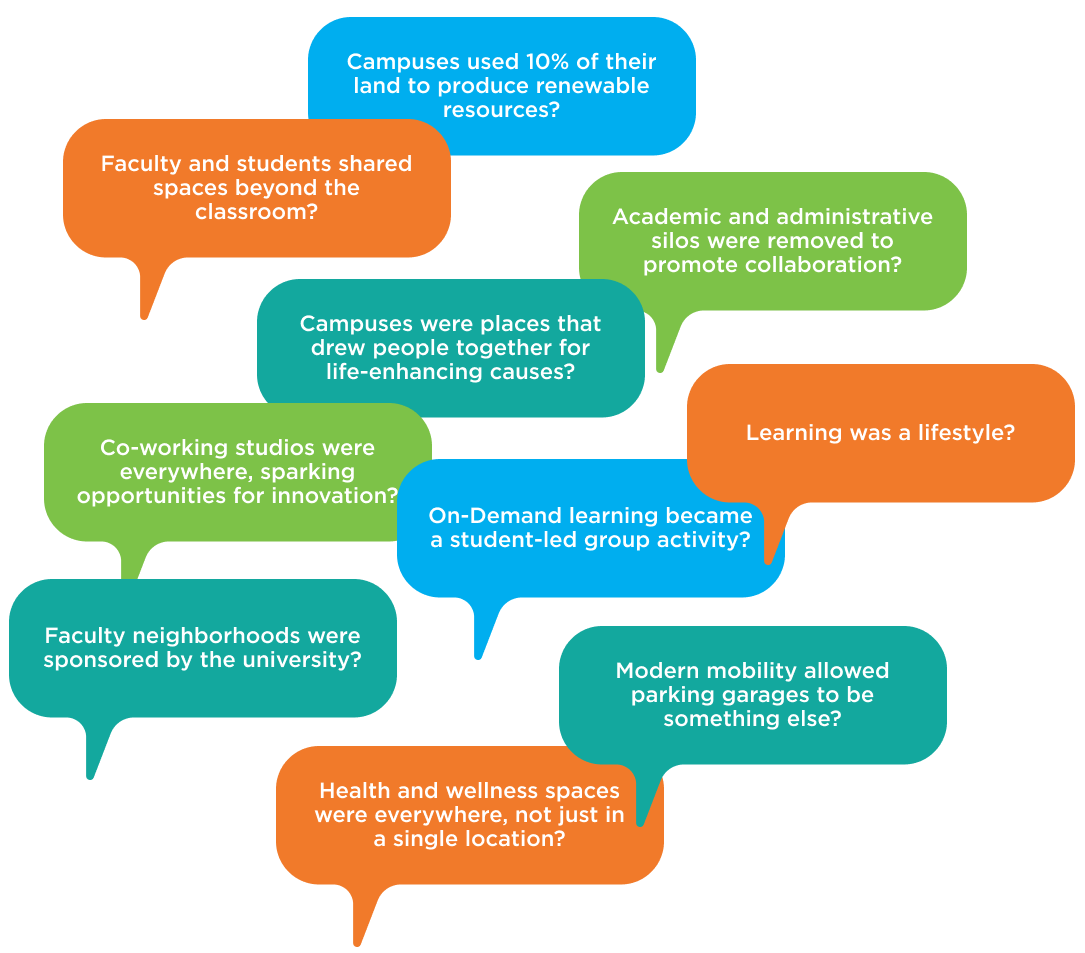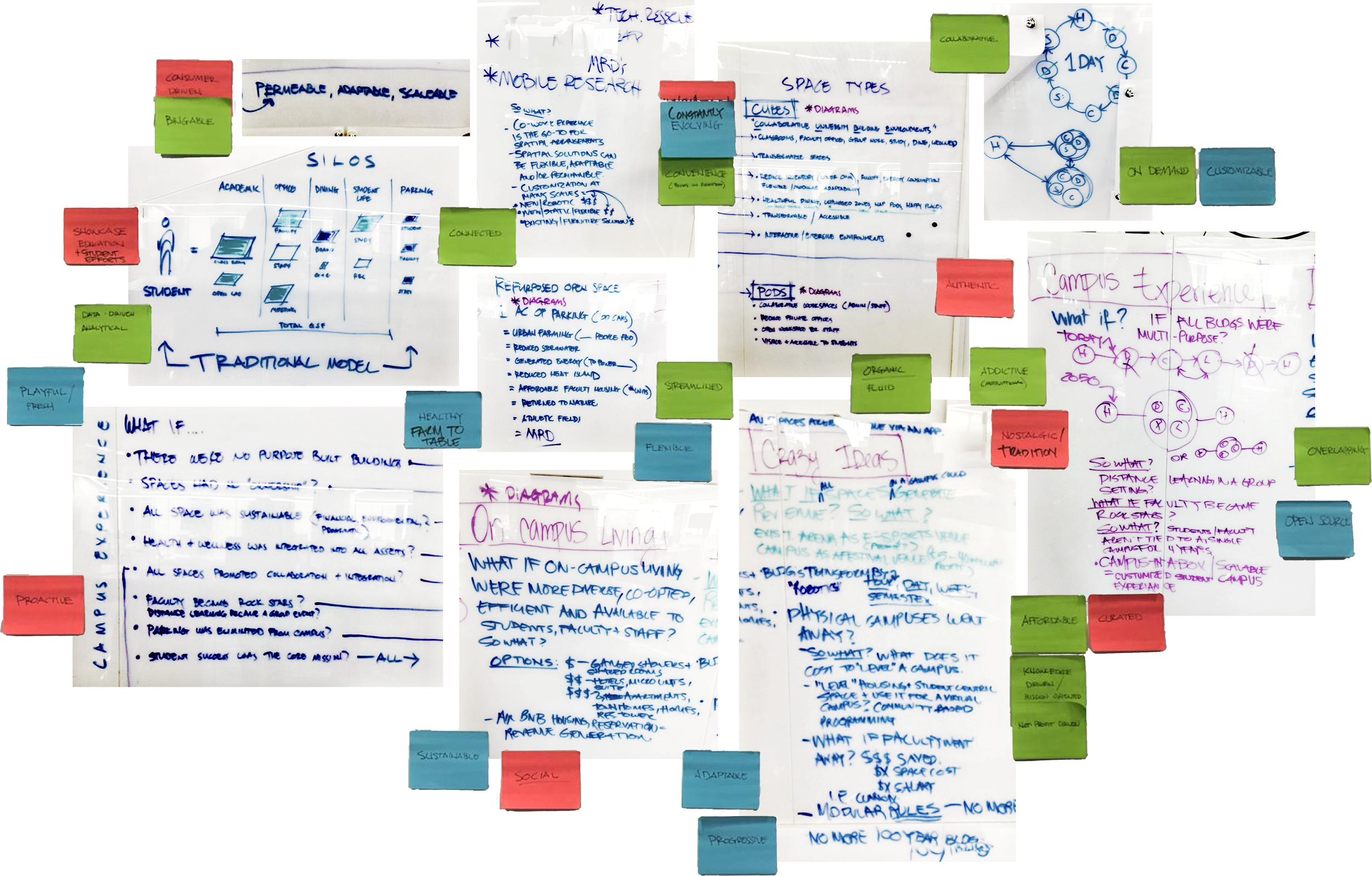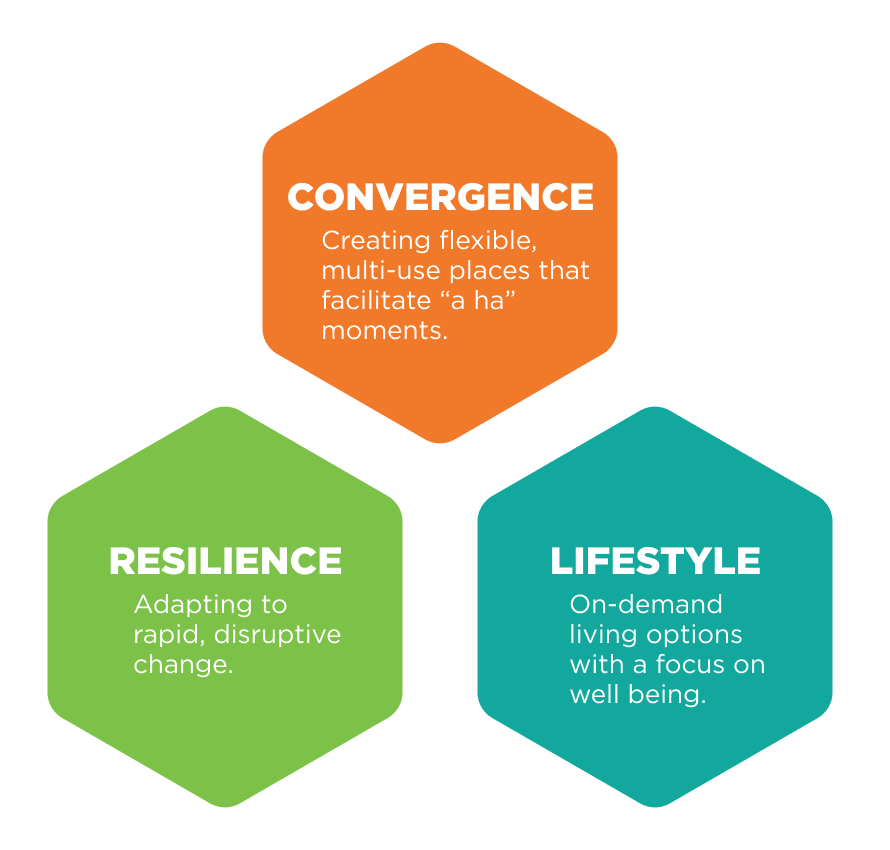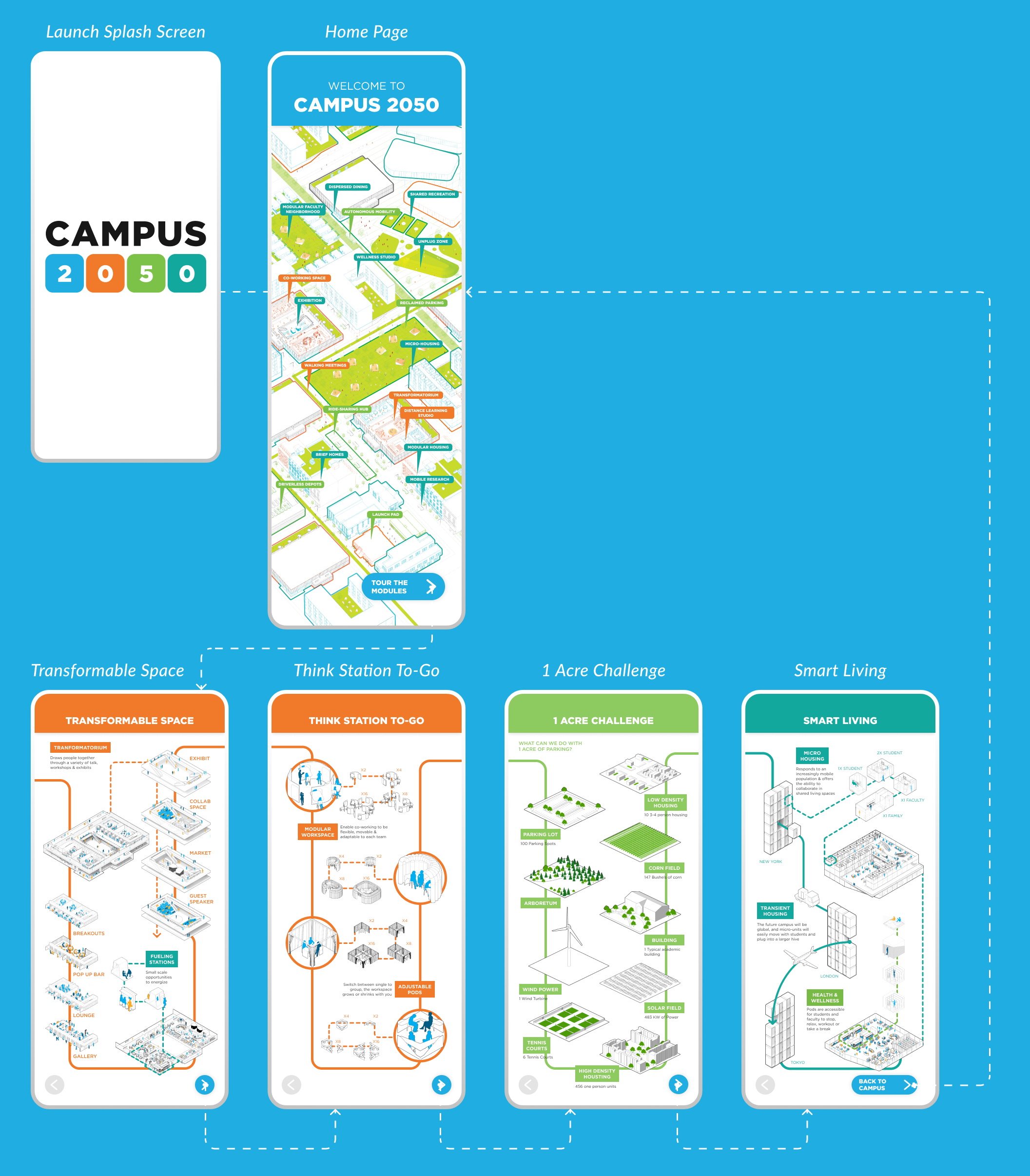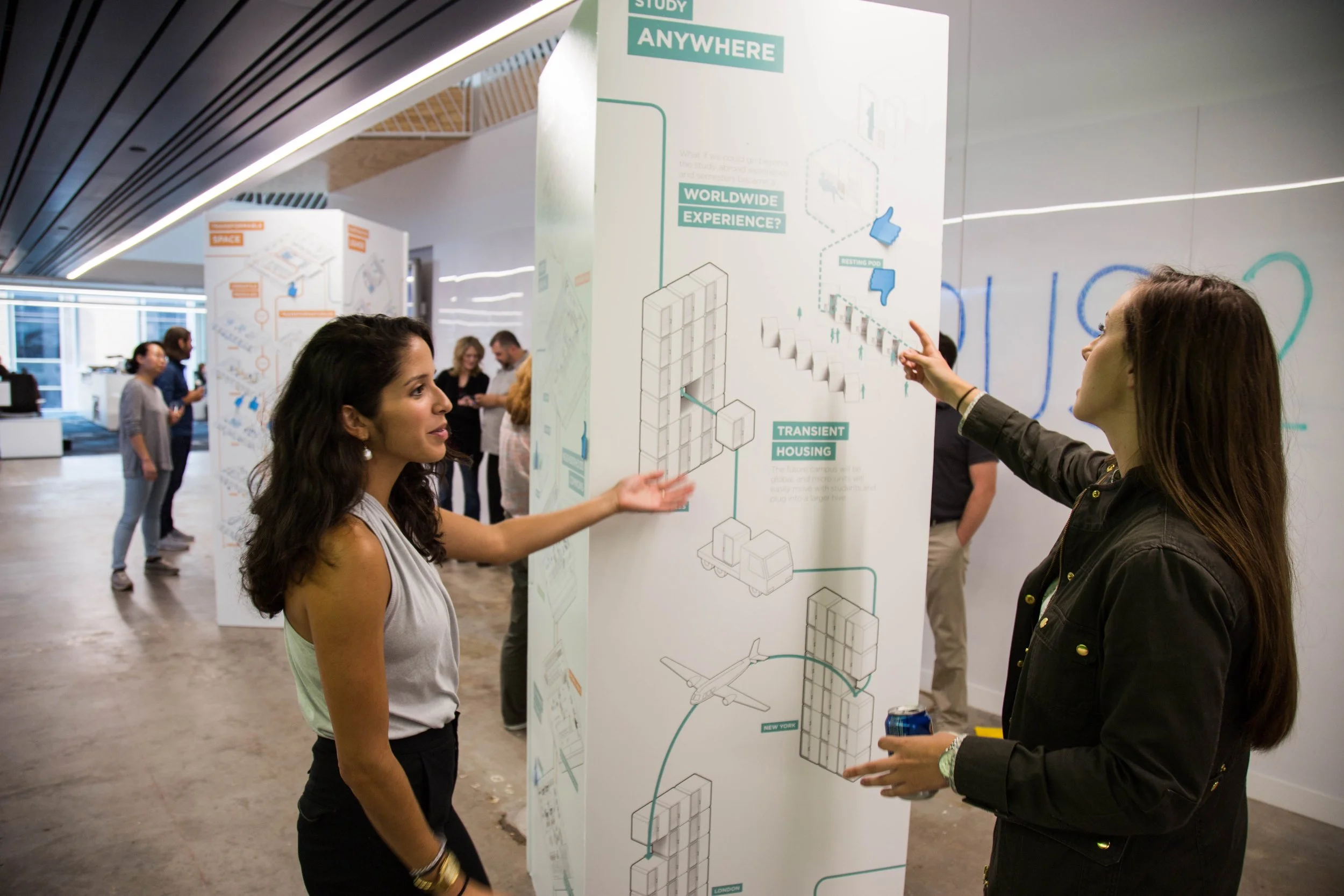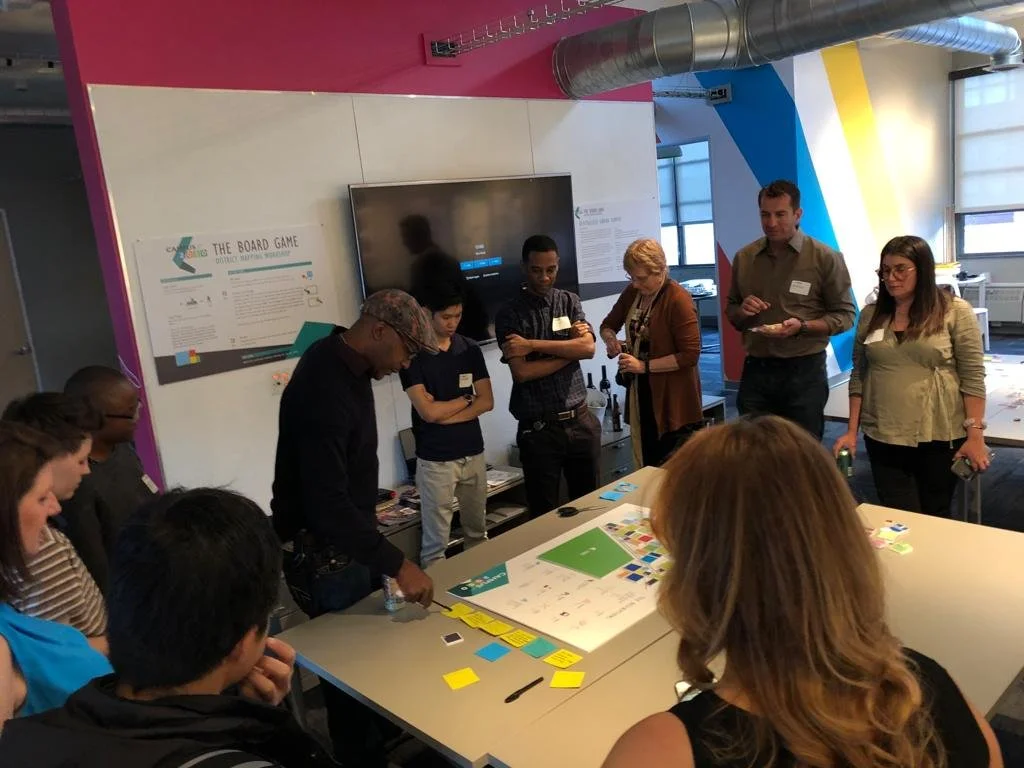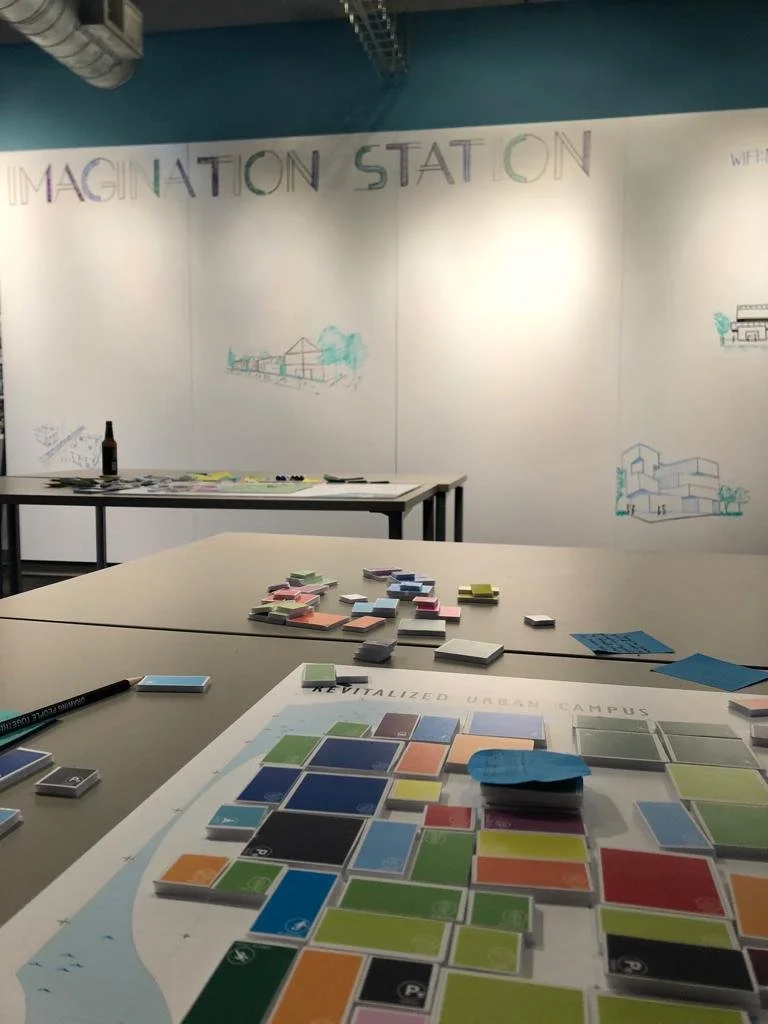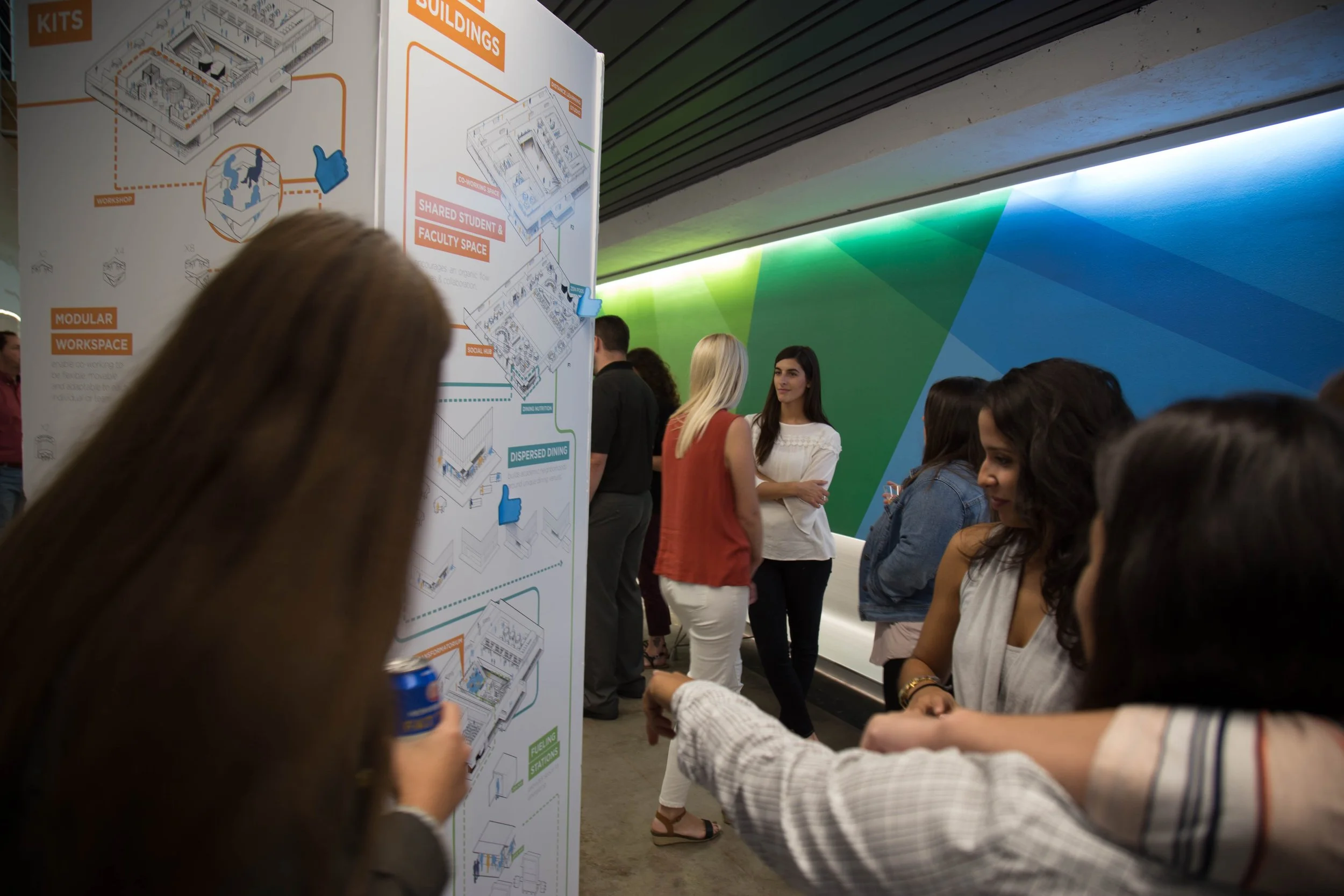Research exploration of what colleges and universities can learn from progressive environments that could dramatically affect the way we experience a campus as learners, educators, neighbors and business owners.
Campus 2050
Role: Lead Researcher & Designer, Graphic Designer, Renderer, Presenter
Tools: Illustrator, Photoshop, InDesign, Rhino & Lumion
In Collaboration with Jeff Funovits & Amber Luter at Populous
Asking What If?
In our preliminary research plan we noticed the traditional campus model is a collection of individual buildings designed primarily for a single purpose.
LEARN in classrooms STUDY in the library EAT in dining halls WORK in offices MEET in the student center REST in your residence hall
But how does this look like for users in 2050? What if this model could be radically changed? What if?…
How Did We Get Here?
Many campuses have remained relatively unchanged since their inception over the last 900 years. Through in depth market & user research and applying established metrics like U.S. News & World Report rankings along with contemporary measures from the Wall Street Journal, We sought out to understand the evolution of campuses to date.
Problem Statement
At the tap of an app, fast-moving companies like Facebook, Uber and Netflix are forever changing the way we come together to live, work and play.
What can colleges and universities learn from these innovators of the on-demand economy to stay relevant for new generations of faculty and students?
Sprint Ideation Session
Building upon our preliminary research we conducted a sprint ideation session, where we collaborated in sharing insights from our preliminary market and user research. This helped us empathize further with the students and faculty members of colleges and their experiences. We could begin to see overarching themes throughout our findings that guide experiences.
Insights
From our research and ideation session these are some of the insights learnt.
What were the challenges?
Older infrastructure hinders learning experience
Experience lack flexible spaces that adapt to new career paths
Users feel more isolated within their own study focus
What was enjoyed?
Campuses are positively nostalgic to users
Unique experiences like abroad studies, or special events are admired
Increase in diversity has had a positive impact
Establishing our Big Ideas
We then translated our insights into a foresight of three themes: Convergence, Resilience & Lifestyle.
Together, they represent the opportunities that tradition-rich institutions will need to embrace to stay relevant. These three ideas guide how we look into existing campuses and how they can adapt to meet the user’s needs.
Design Brainstorming
Drawing on the key ideas and themes we went to the drawing board and began developing design decisions and concept spatial experiences that embody our themes and user needs. So what does Campus 2050 look like?
Welcome to
We identified the physical interventions that will be necessary to have impact on a campus’ ability to represent an ever-changing world for users. We included an interactive platform for future clients to access research during and after workshops.
Campus 2050
Bringing these innovations to others was an important step in communicating the potential to transform the current academic experience. Presenting to future clients and colleagues throughout the country these workshops/events lead to only more data gathered and design thinking that helped build a solid foundation of Campus 2050.
Campus 2050 Tour
Campus 2050’s research exploration is a reflection of the foundation on inventive and insightful design thinking and making. This resource is a guide to design values that also serve as a tool to create relationship with other academic based professionals and, like our themes, remain adaptable to future and new innovations.
